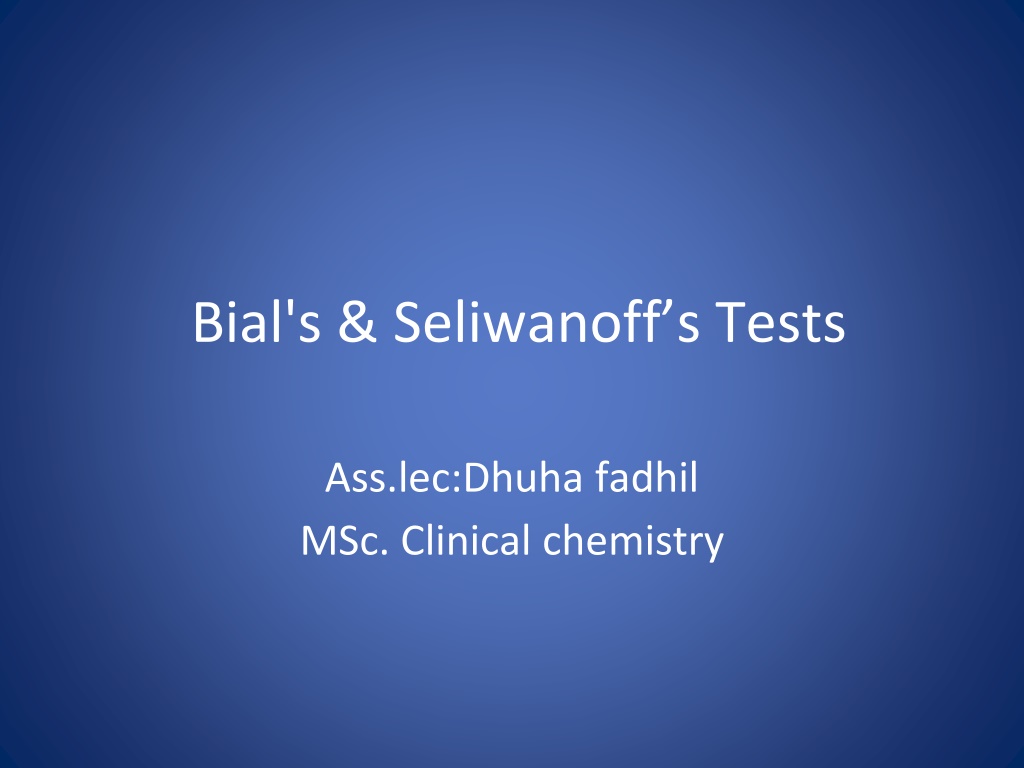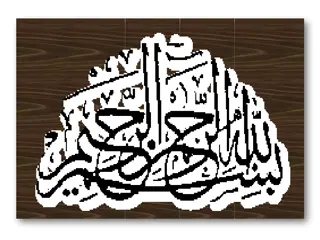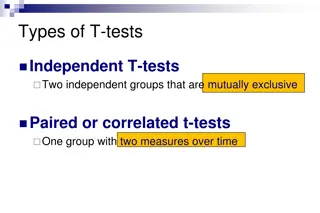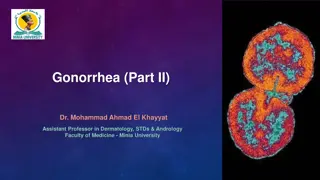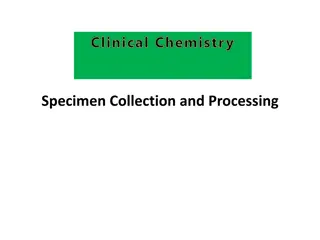Understanding Bial's & Seliwanoff's Tests in Clinical Chemistry
Bial's and Seliwanoff's tests are chemical tests used to detect the presence of pentoses in a sample, distinguishing them from hexoses. These tests involve specific reactions with reagents to produce distinct color changes based on the type of sugar present. The Bial's test, particularly sensitive to pentoses, can also be utilized for RNA quantification.
Download Presentation

Please find below an Image/Link to download the presentation.
The content on the website is provided AS IS for your information and personal use only. It may not be sold, licensed, or shared on other websites without obtaining consent from the author. Download presentation by click this link. If you encounter any issues during the download, it is possible that the publisher has removed the file from their server.
E N D
Presentation Transcript
Bial's & Seliwanoffs Tests Ass.lec:Dhuha fadhil MSc. Clinical chemistry
Bials test (Orcinol) Bial s test is a chemical test performed to detect the presence of pentoses Objective To distinguish between the pentoses and hexoses. Reagent Bial's reagent consist of a solution of orcinol, HCl and ferric chloride)
Principle pentoses are dehydrated by concentrated acid to yield furfural, which in turn condense with orcinol to form a blue-green precipitate. In the presence of hexoses, hydroxyfurfural is formed instead of furfural which upon condensation with orcinol forms a muddy brown colored precipitate. The intensity of the precipitation is directly proportional to the concentration of the pentoses in the sample.
bials test is a sensitive and specific test for pentoses sugars(ribose, ribulose, xylose, and arabinose)and other biochemical molecules containing these pentoses(what are they?) Pentoses give blue-green color complex within short time, some hexoses in prolonged heating yield hydroxymethylfurfural which react with orcinol to give muddy brown color complex.
Procedure 1) to 2 ml of Bial s reagent add (5drops) of test solution(ribose or fructose) and warm gently in a hot water bath for 1-2 minutes. 2) a bluish green color indicates a positive result (pentoses). Prolonged heating form muddy brown products indicates (hexoses). NOTE:- The dehydration agent is HCL. The condensation agent is orcinol and ferric chloride.
Result interpretation Positive Bial s test: formation of blue color ( eg. Ribose sugar) Negative Bial s test: formation of any other color indicates negative test. Hexose sugar ( glucose, fructose) generally gives green, red or brown color product.
Uses of Bials Test 1. This test is used to detect the presence of pentose in a given sample 2. This test can additionally be used for the quantification of RNA in a sample.
Seliwanoff's (resorcinol) Test used to distinguish between aldoses (like glucose, galactose and mannose) and ketoses ( fructose & sucrose). This test is based on the idea that in the presence of heat, ketoses become more quickly dried than aldoses. Therefore this test is timed color reaction specific for ketohexoses.
Objectives of Seliwanoffs test To determine the presence of ketohexoses within the sample. To differentiate between ketoses and aldose.
principle Test uses HCl as dehydrating agent and resoncinol as condensation agent(Reagent). The test reagent dehydrates ketohexoses to form 5- hydroxymethylfurfural. 5-hydroxymethylfurfural further condenses with resorcinol present in the test reagent to produce a cherry red product within two minutes. Aldohexoses react to form the same product, but do so more slowly giving A faint pink to yellow yellow color complex
On dehydration both ketohexoes and aldohexoes give hydroxymethyl furfural but the relative amount of this product is vary according weather one works with aldoses or ketoses. Aldohexoes yeilding only small amount of the hydroxymethyl furfural which resposible for no significant change in the color or appearance of only light pink to yellow color which develop in longer time.
Procedure Take two clean, dry test tubes and add 1 ml of the test sample in one test tube and 1 ml of distilled water in another as blank. Add 2 ml of Seliwanoffs reagent to both the test tubes. Keep both the test tubes in a water bath for 1-2 min. Observe the formation of color and note it down.
Result and Interpretation of Seliwanoffs test appearance of the color after a prolonged period of time indicates a negative result which means that the test sample doesn t have ketoses.
Limitations of Seliwanoffs test 1. The high concentration of glucose or other sugar may interfere by producing similar colored compounds with Seliwanoff s reagent. 2. Prolonged boiling can transform glucose to fructose by the catalytic action of acid and form cherry red-complex giving a false-positive result. 3. This test is a generalized test and doesn t distinguish between specific ketoses, and a separate test is required for the particular ketose sugar identification.
